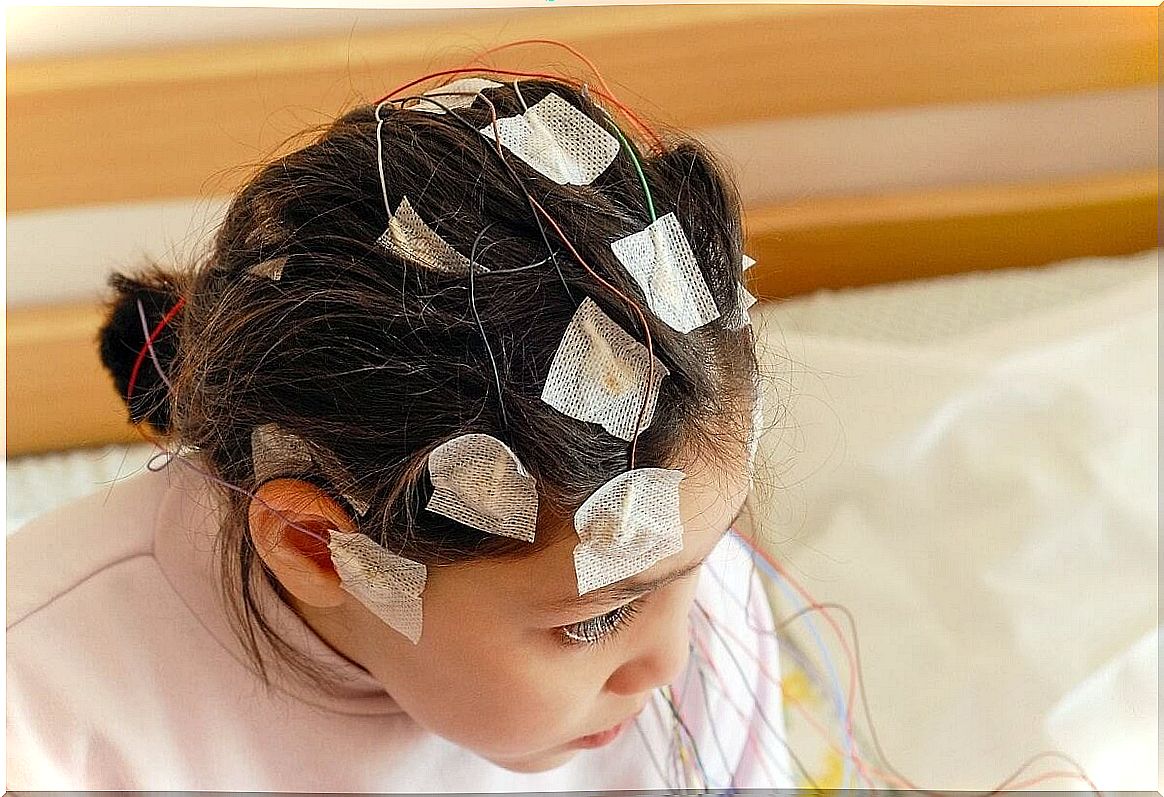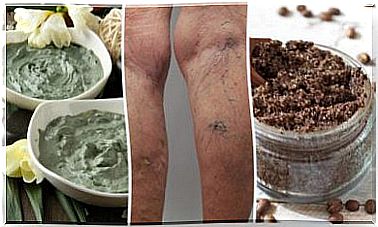Detection And Cause Of Epilepsy In Children
Epilepsy in childhood is a serious illness. Its severity and chronic nature make it a disease with serious changes that affect the quality of life of the affected child and their parents.

Epilepsy in children changes the quality of life of the little patient significantly. In fact, it affects not only his life but that of his entire family as well.
Because the other family members must also be involved in the care and taking medication. Furthermore, they should change or abandon habits that are harmful to the patient.
This disease is a neuronal transmission disorder in which many nerve cells carry out electrical discharges at the same time. Their nature and classification depends on the location of electrical activity. Next, we will take a look at the causes and methods of detection of this disease.
Prevalence and classification of epilepsy in children
The data collected by the Child Neurology Foundation show that around 40% of all children diagnosed with epilepsy have the disease but do not have seizures. This is important for diagnostic differentiation as they do not require the same type of treatment.
A child can also have seizures without being an epileptic. Therefore, as needed, additional methods are used to determine the cause of a seizure. Finally, the disorder could be due to some other neurological or vascular cause.
It is also known that around 20% of children with epilepsy also have an intellectual disability. This has implications for the academic performance of young children with the condition as they not only struggle with their epileptic seizures, but also lag behind in learning to write, read, and other academic matters.
But not all childhood epilepsies are created equal. According to the international classification, some start in the front part of the brain and some start on the sides.
In addition, they can occur with or without seizures, with additional symptoms, loss of consciousness, or without fainting. Not all seizures are created equal: the convulsions can occur in general, i.e. affect the whole body, or e.g. B. be focused on certain limbs.

Epilepsy in children: causes and risk factors
Rather than determining the origin of childhood epilepsy, it is more important to understand that there are risk factors and related causal relationships. Scientists do not fully understand the intrinsic mechanism of neuronal discharges. However, there are records of contexts that favor the disease.
In childhood, the greatest risk lies in infancy. There, febrile seizures up to the age of 4 can be mistaken for epileptic episodes. The assessment of neurologists and paediatricians is crucial here.
Genetics and family medical history are also important here. A child is more likely to be epileptic if their parents or grandparents are also epileptic.
In fact, researchers have classified some genes as triggers, although these always have to be stimulated by external factors that determine their expression. This means that hereditary transmission does not always lead to symptoms.
Brain and meningeal infections are another cause of childhood epilepsy. Often they do not occur at the same time as the acute clinical picture, but rather as a consequence and effect of encephalitis (inflammation of the brain). This can happen several months or even years later.
Head injuries can also lead to epileptic sequelae. This is particularly worrying in contact sports such as soccer. A child can quickly recover from a blow to the head and regain full consciousness, but may be diagnosed with epilepsy some time later.
The role of the brain and vascular system in epilepsy
Finally, another causal group is formed by vascular diseases. In this case, it concerns changes in the cerebral blood flow such as arteriovenous malformations or strokes.
Such disorders are not as common in children as they are in adults. However, suspicion arises when symptoms such as seizures or restricted mobility of the limbs are present.
A special section deals with prenatal diseases. During pregnancy, toxins can be passed from the mother to the fetus and affect its neural development.
For example, tobacco and alcohol are two drugs that cause disease in the fetus as they cross the placenta and eventually alter electrical transmission.
How do you recognize epilepsy in children?
Suspicion of this condition in a child usually begins after the symptoms are manifested. Usually the first sign is a seizure, which in the child is not accompanied by a fever. After that, a series of complementary methods begins under the guidance of the pediatrician and neurologist. The most important in this context are the following:
electroencephalogram
The electroencephalogram is a study that measures electrical activity in the brain. A medical technician places electrodes on the patient to record the neural transmission of the currents from outside the body.
This recording is analyzed by specialists to find out whether there are any abnormal discharges. This doesn’t have to happen during a seizure.

Brain scan
Computerized axial tomography (CT) of the brain is able to detect abnormalities in the structures of the skull that can cause seizures. This can be, for example, a tumor, increased pressure in the cerebrospinal fluid or an arteriovenous malformation (ie a malformation of the blood vessels).
Magnetic resonance imaging
Just like CT scans, magnetic resonance imaging is a complement to examining other softer structures.
Positron Emission Tomography (PET)
Positron emission tomography (PET) has recently established itself as a complementary method for various clinical pictures, including childhood epilepsy.
With the help of an injection of a metabolic substance that is absorbed by the cells to be examined, it is possible to see this activity in the form of colors on a CT or MRI scan.
Epileptic foci and other areas that are above expected values will be marked by the injected substance. In this way, specialists can identify tumors or neural areas with high activity.
If in doubt, contact a pediatrician
Epilepsy in children is a disease that cannot be ignored. The earlier treatment and prevention measures are taken, the better the quality of life for the child and their family. The suspicion can be worrying in many cases, but you should see a doctor immediately if you have an attack.
Treatments vary and have changed over the years. Nowadays there are more specific diagnostic tools with higher sensitivity. Follow-up and rehabilitation protocols are also more accessible.









